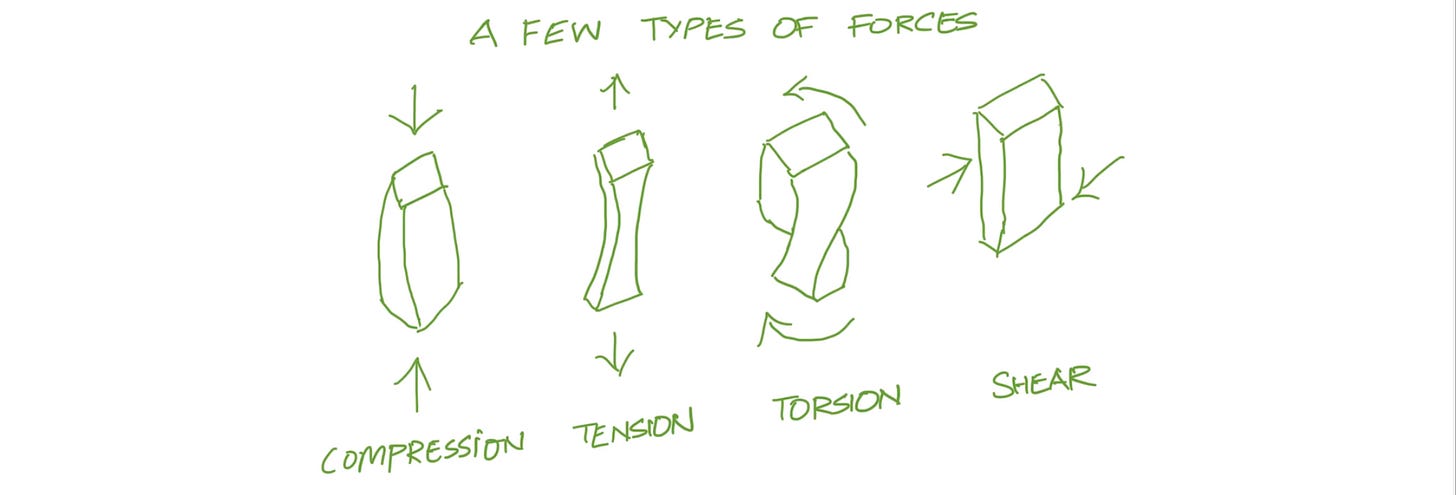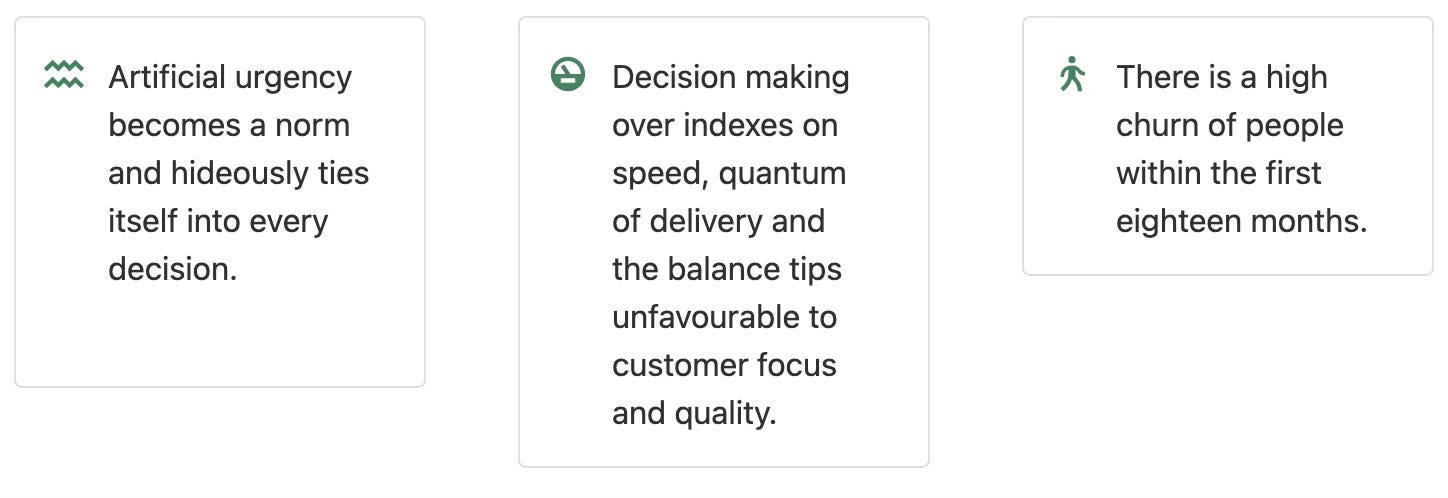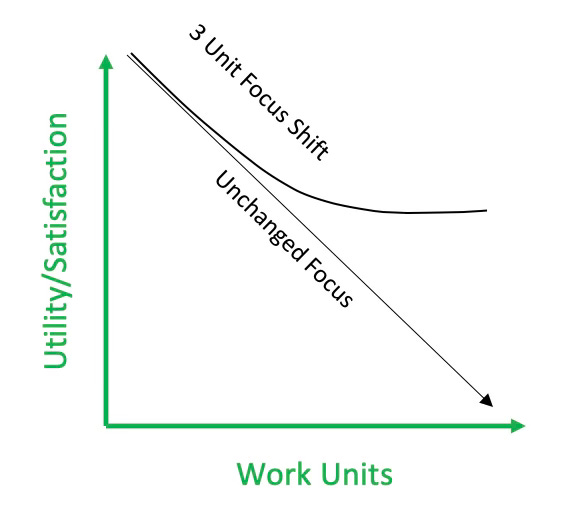Intensity - The key ingredient to Culture
Workplace intensity makes or breaks a culture. Here's a perspective on how to diagnose, manage and create workplaces that have the right amount of intensity.
I once used a block chain analogy to explain culture to a senior leader. Culture is very similar to blockchain. Every decision you take is a transaction recorded across your team members (distributed ledgers). They later reference these decisions to drive their own behavior. What you do and how you do it as a leader is very important as this defines your team’s behavior. Great leaders are careful architects, who intentionally design how their actions get recorded into the culture “blockchain”. There are multiple levers to that determine culture and I am contemplating one of them today – Intensity.
Fast paced and high activity workplaces are a draw to many. This environment is a preference to “achievers” who believe they can use it to their advantage and hone their skills. Intense workplaces are easily identified by their reputation for speed, quantum of work, super flat organizational structure and a high degree of conflicting priorities. Churn is normal. The description fits a lot of great organizations, but these are rather the ones which can keep the dial of intensity in control. Even across these great organizations, there is always that team which had already lost control of intensity.
If you observe organizations that lose control of this lever, you’ll notice three distinct conditions that set in:
The fallout is that customer value from their products erode really fast. What starts to matter is that their team is a well-oiled machine delivering at a frequency, rather than how well the delivery is useful to the customer. Their talent investment would move towards roles that are focused on pushing teams to finish lines rather than roles building their product. The measurement will shift towards volume, frequency and delivery over quality and relevance. The shift of these practices creates a perception of repetitive cycles of “doing the same thing”, causing team members to feel that their learning has reached a saturation point.
To provide an economics analogy, behavior of the team starts to reflect the law of diminishing marginal utility. If you’ve done this for 6 months, you’ve done it for 18 months, and if you’ve done it for 18 months, there is nothing much to gain from the experience. The marginal utility for satisfaction from work declines for every additional unit of the same work done.
Managing Intensity
Prevention and cure for dialed up intensity are similar. The key is to architect the practices that lead to a dial up.
The first element is work design. Every organization has a unit time to deliver work – a sprint, a quarter or a year. They also have a set of focus areas for delivery – could be performance of your product like boot-time, or a channel of touchpoint with customers like screens. Work design is a combination of these two elements. The activity of your teams will be based on this work design.
For example, let’s consider that your work design focus area is device screens and your unit time of work is a quarter. For that quarter, your leadership is going to focus on activities that monetize your screen, your product managers are going to build their customer experience on features related to your screen, your engineering teams are going to work on delivery of related features.
This dials up the intensity on a focus area over a unit time. Most organizations work in this model, unconsciously. Things break when they prolong this work design over multiple units of time. If your work design remains constant for more than three units of work, marginal utility of improved customer experience and work satisfaction diminishes. The key is to alter your work design periodically so that marginal utility never goes negative.
Practical to-dos:
Set up a discussion with your leadership over work design. It is important that you have a deep understanding of key focus areas and how they change over time.
It pays to always be on the lookout for the three conditions of dialed up intensity and generate data over them.
Consult with your leadership team on how to rearrange work design using the 3-work-unit tenet.
The second element is reward design. Remember the last time when there was a sudden issue, causing serious delay or bad experience to your customers? You’ve probably had to put your best people to the problem who produced quick results and were an example to others in the team. Firefighting is heroic, literally and at work. But, how would actual firefighters feel if the same building in the neighborhood caught fire every other week? At work, firefighting is a rewarding experience leaving your team with a feeling of responsibility and a sense of satisfaction. But, it has this effect only a few times. Never appreciate firefighting in public unless it really leaves a problem fixed, at least at an incremental manner or reduces the frequency of fires. By altering what and how you recognize and reward your team, you can make headway into setting the right behavior.
Recognizing and rewarding firefighters frequently are many a times cause for the fire itself.
Practical to-dos:
Articulate what behavior you want to recognize and reward. What works really well is adding the right display of the behavior against a misunderstood one. Articulating a “what it looks like” and “what it does not look like” helps you define the expectation across your team. For example, if you want to recognize “Problem Solving”, you might end up encouraging “fixers” who provide quick fixes.
The third element is artificial urgency. Your customers buy your product/service for a great experience. Teams often get lost in the way they deliver this experience. At a team level, goals distil down to units of delivery – releases, signoffs, launches and their timelines. While these are essential for getting things done, your customer does not care about these units of delivery. A typical example is the auto update for apps on your phone. Just because you’ve delivered four releases and updates to your customer does not mean that you’ve delivered a significant customer experience to them. You need mechanisms to ensure your team’s wins are really wins. The way you design and cascade goals and how you celebrate your wins is an important practice.
Practical to-dos:
Have a goal template? Start with a why. You can make your goals S.M.A.R.T, but if they don’t connect with an actual customer problem, they are not really smart. This simple change can help leaders ask the right questions. If you have these rituals of celebrating milestones, celebrate what a customer has gained out of the milestone. If you are a social network and you have a milestone of 1 million signups, celebrate the fact that you have exponentially increased your customer’s ability to express rather than the milestone itself.
Controlling the dial is hard and over-indexed intensity leads to erosion of trust with both your team and your customers. Recognising dialled up intensity and being conscious of it is the first hard step towards making a dent. As a careful architect, you would have not only led your team away from burn-out and churn, but you would have also architected a workplace of choice.
Stuck somewhere? Experimenting something that’s not here? Let me know!





